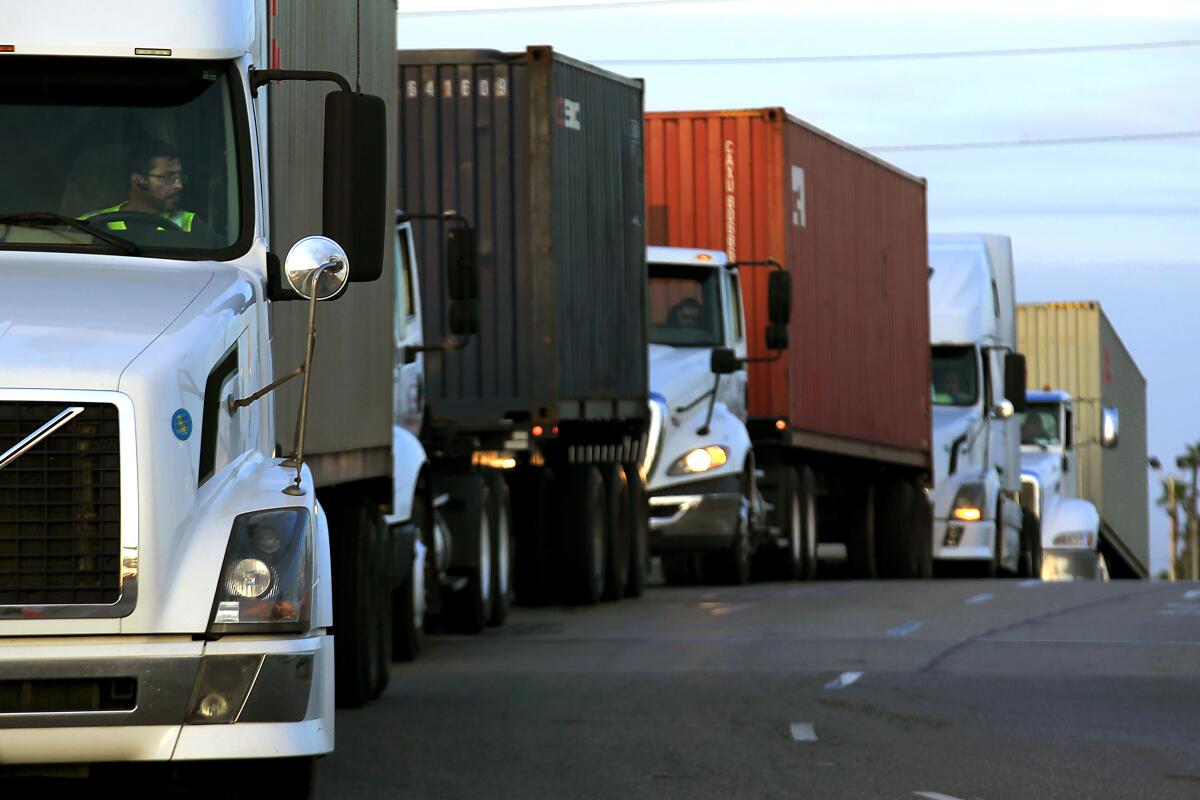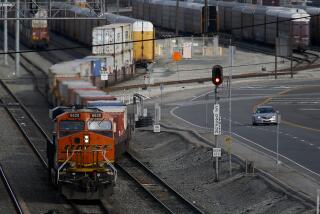Editorial: Goodbye, diesel exhaust. California adopts nation’s first zero-emission truck rule

California, again, is leading the nation’s fight against climate change. The California Air Resources Board adopted a rule Thursday requiring that by 2045 all trucks sold in the state be zero-emission models.
The rule is the first of its kind in the United States and among the most ambitious efforts in the world to replace dirty diesel trucks with battery-powered and other zero-emission vehicles.
The Air Resources Board passed the rule despite lobbying by fossil-fuel interests and business groups to weaken or delay the shift to electric trucks amid the uncertainty created by COVID-19. And the board acted despite the prospect of another fight with the Trump administration, which has been hellbent on blocking California’s efforts to help clean the air and save the world from global warming.
But as we increasingly feel the damaging effects of a hotter planet, it should be apparent that any delay in cutting greenhouse gases would only hasten our descent toward climate catastrophe. Nor can we ignore the immediate impact of diesel pollution — residents living along freeways and near the ports and warehouses breathe dangerously high levels of diesel exhaust, putting them at greater risk of cancer, heart disease and respiratory problems.
So California leaders deserve credit for forging ahead with a rule that is even stronger than an earlier version floated by the Air Resources Board’s staff. It will be impossible for the state to clean up its dirty air and do its part to slow the devastating impacts of climate change without eliminating fossil fuels from the transportation sector.
The board’s new Advanced Clean Truck regulation will require manufacturers to begin selling zero-emission models in 2024 and to make those vehicles an increasing share of their sales each year until 2045, when all trucks sold in the state must be clean. The rule covers a range of trucks, including heavy-duty pickups, delivery vans, box trucks and big rigs.
There are some 70 different kinds of zero-emission trucks on the market, mostly from startups and smaller companies. The new rule is aimed at prodding major manufacturers to get off the sidelines and move faster to roll out electric and fuel-cell models. That’s important because a growing number of companies have said they want to transition to zero-emission trucks, but they need a robust marketplace.
Communities, too, have been promised clean trucks. The ports of Los Angeles and Long Beach, which together make up the largest single source of pollution in Southern California, have pledged to allow only zero-emission trucks at the port complex by 2035. Such pledges are dependent on the availability of clean trucks.
As important as the zero-emission truck mandate is, however, it’s just one piece of the puzzle. California has to cure the entire transportation sector — which is responsible for 80% of the state’s smog-forming emissions, 95% of its toxic diesel soot and 50% of the greenhouse gas emissions — of its dependence on fossil fuel.
The Advanced Clean Truck rule will get manufacturers to build the zero-emission trucks. The state has to follow up that step by requiring companies to begin switching their fleets to the new, clean models. And especially in Southern California, regulators need to require that warehouses, ports and shipping businesses transition to zero-emission trucks as soon as possible to provide relief to nearby residents living in the “diesel death zone.”
Meanwhile, state officials need to make sure that a vast network of charging stations gets built and that the state’s electrical grid can support it. Broad adoption of electric trucks and cars simply won’t happen if drivers can’t count on being able to recharge their vehicles wherever they need to do so.
California is right to move aggressively forward on zero-emission trucks. But ultimately this needs to be a national policy, backed by federal regulations and federal dollars. The U.S. could be a leader in developing and selling clean vehicles and the infrastructure that supports them, which drive innovation and create jobs — all while cleaning the air and slowing climate change.
The federal government is MIA in this effort, however, held back as the Trump administration whistles past the graveyard. That’s why it’s a good thing, once again, that California is stepping up.
More to Read
A cure for the common opinion
Get thought-provoking perspectives with our weekly newsletter.
You may occasionally receive promotional content from the Los Angeles Times.










